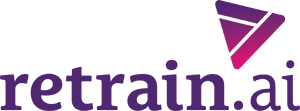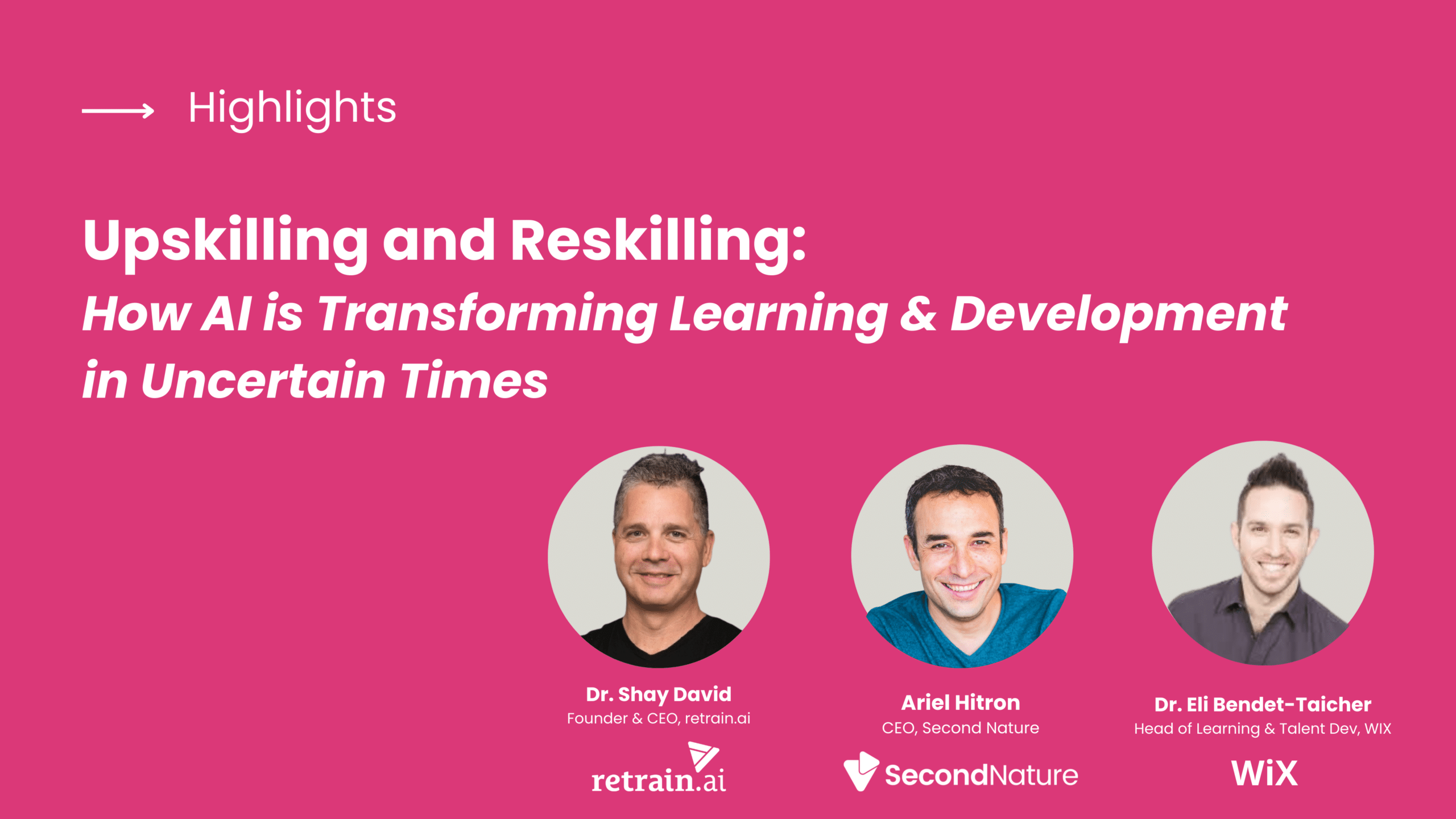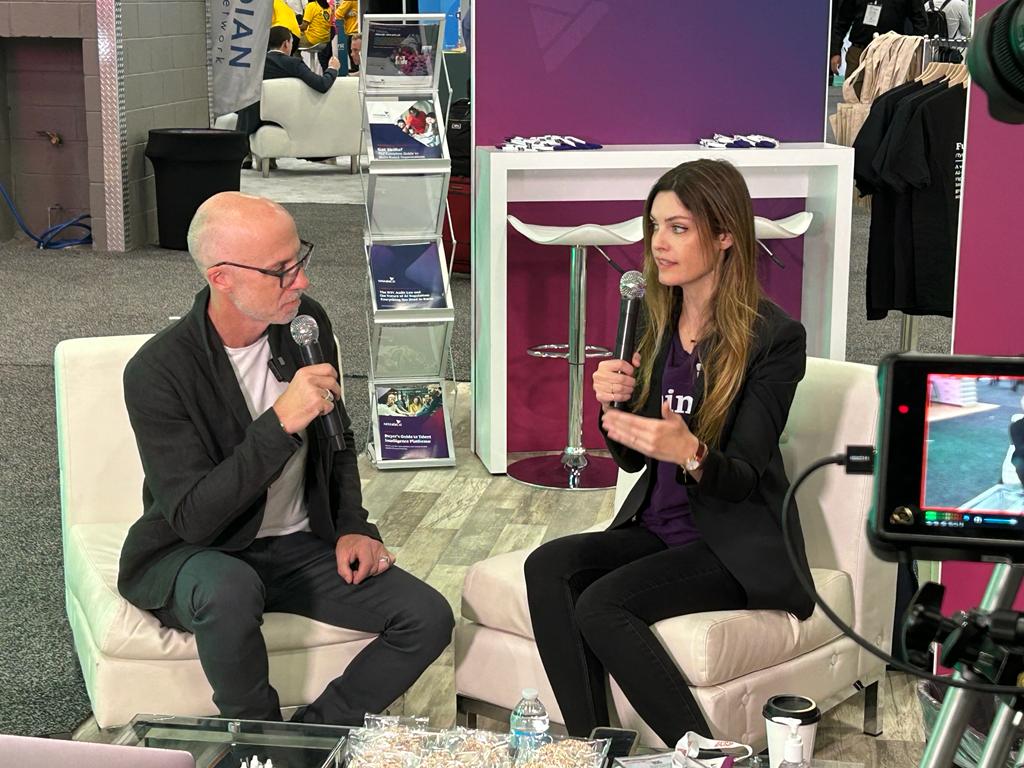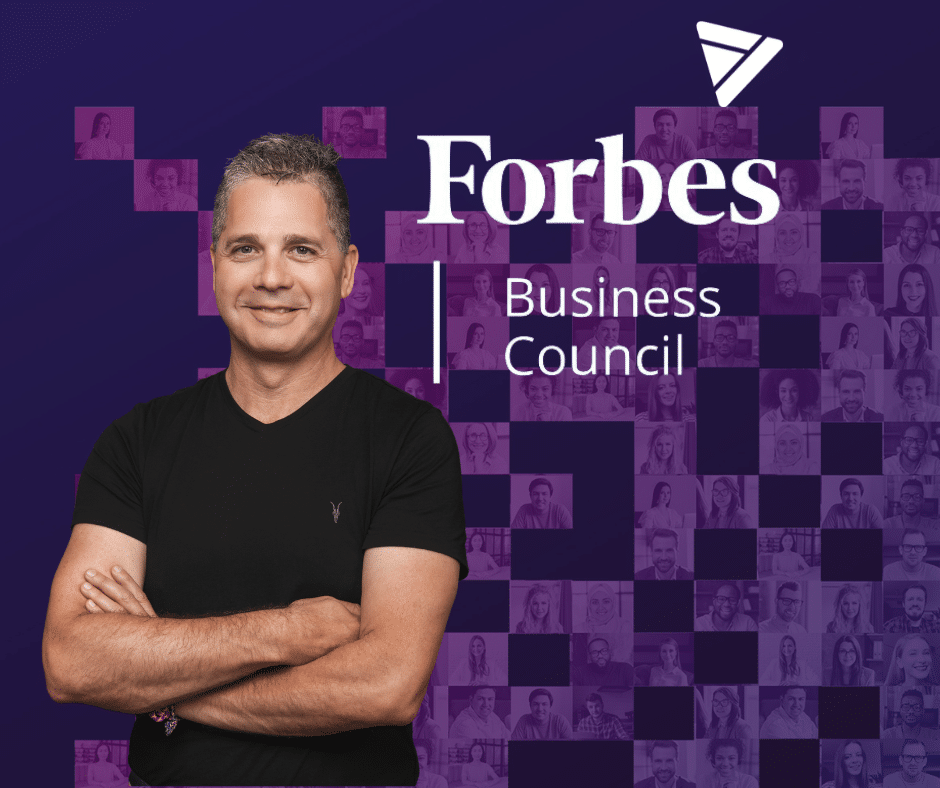In a recent panel discussion, Dr. Eli Bendet-Taicher, Head of Learning and Talent Development at WIX.com, Ariel Hitron, CEO of Second Nature, and retrain.ai CEO Dr. Shay David shared insights into current upskilling and reskilling trends and challenges, the transformative nature of AI, and what it all means for the future of learning and development in HR.
In part one of this blog series, we shared their thoughts on the importance of investing in talent development, mapping skills and unifying skills language across disparate HR tech systems within organizations. Here are more highlights:
To see the full session on-demand, click HERE.
Ariel Hitron: How do you consolidate between the macro and micro, especially for a large enterprise that has thousands of employees? On one hand we’re thinking of skills in terms of capabilities, tasks, roles, etc. in the macro environment, then there’s the day-to-day. Where do you spend most of your energy, time and effort? What are the strategies and tactics?
Shay David: That’s a great question because it’s kind of global versus local. In our system, we have a process we call calibration. We’ve trained our system to basically help automate the building of that job infrastructure, of that skills taxonomy, and we allow organizations that use that intelligence layer to begin to build their job architecture.
Our system has learned through natural language processing and has analyzed tens of millions of job descriptions and hundreds of millions of CVs to learn, for example, what are those jobs in practice? From that layer, our system can be calibrated for a specific company–different equipment, different locations, different values, etc. We allow customers to start with a labor market data-fed template and then go through a process of validation. Further input to the system then provides more for it to learn and the process can replicate at every level. We want to get tools to the people that are actually in the field–that need to hire people and train people–so that they can use sophisticated AI not to replace themselves, but rather as decision support.
AH: What do you see when you think about the skills gap in broad strokes like corporate level, and then the people who are actually being hired or reskilled into new roles? How do you connect the two?
Eli Bendet-Taicher: Companies really need to first understand what kind of roles make the most impact and what kind of roles they see changing the most. They need to focus on the problematic roles, the revenue-generating roles—all the roles that make a big impact. We started there because it pains more to lose people there than in other departments. The end goal is to cover everything, but when you have a huge monster like Wix or other big companies, it’s a bit difficult to do all the mapping of roles very, very quickly.
You have to understand what the heat map is–where you really need to focus–and start there. Once you do that, and it’s an exercise that works well, then you can implement it for other roles using a similar methodology. Tools really help you do that. AI is a great tool, but you need to do the fine-tuning through continuous calibration. Once you do that, you’re on a roll.
AH: So after you’ve done the mapping, and know where those skill gaps are, how do you actually deliver in a way that drives change? Making a change in behavior within how people do their day-to-day job is really really hard because people generally don’t love change.
SD: The overall digital transformation and disruptive landscape mean that the environment is changing. And when the environment is changing, the question is, how do we respond to that? The customer-facing teams are probably the first to change, so sales and customer service, which use a lot of soft and hard skills. Second is that there are big gaps, generally speaking, in the market around digital skills, particularly for the older generations. If you were a shift manager at a manufacturing facility and your line of business is changing–maybe because it’s now automated or because some manufacturing was shifted abroad or something like that–what do you do next? We think about skills as a ladder and for a lot of people displaced by automation, digital transformation, or now recessionary pressures, without help they’re at risk of falling too many steps down the ladder.
But what if you could learn some of those new digital skills? It doesn’t mean you become a Python programmer and start building robots yourself, but it could mean you learn how to operate drones, which is an emerging job of the future. There are jobs in moving from old energy to new energy, or from old banking to new banking. Those are all a combination of soft and hard skills but mostly focused on digital. And the good news for learners is that many of those skills can actually be learned online using free content from public sources like Coursera, Udemy, or corporate learning programs, all of which could be made to fit those specific roles and those specific skills.
AH: The acceleration of Covid does put a lot of pressure on salespeople, for example, who have these amazing soft skills they’ve honed over many years like empathy and relationship building. You have very tenured employees having to reskill into this new environment. What do you see in your organization?
EBT: We always listen to our people in action. So if we see issues with active listening or asking powerful questions, for example, we say okay, we need to create training that is specific for that. We also need to understand whether these behaviors are changing post-training. Then we need to really measure that behavior change to understand, will we be able to move the needle there? How does that translate to more revenue?
We’re trying to correlate our learning data to performance data to revenue data to show ROI. It’s challenging for every L&D professional to correlate their work to business success, but if they’re able to do it, and they have the tools to offer enough insights and data to show it, they’ll get the budget, they’ll get the headcount. We’re not usually viewed as a revenue-generating department but if my KPIs are derivatives of the business KPIs, I can connect myself to the success and show ROI.
retrain.ai is a Talent Intelligence Platform designed to help enterprises hire, retain, and develop their workforce, intelligently. Leveraging Responsible AI and real-time labor market data, enterprises unlock talent insights and optimize their workforce effectively to lower attrition, win the war for talent and the great resignation in one, data-driven solution. To learn more book a demo.










